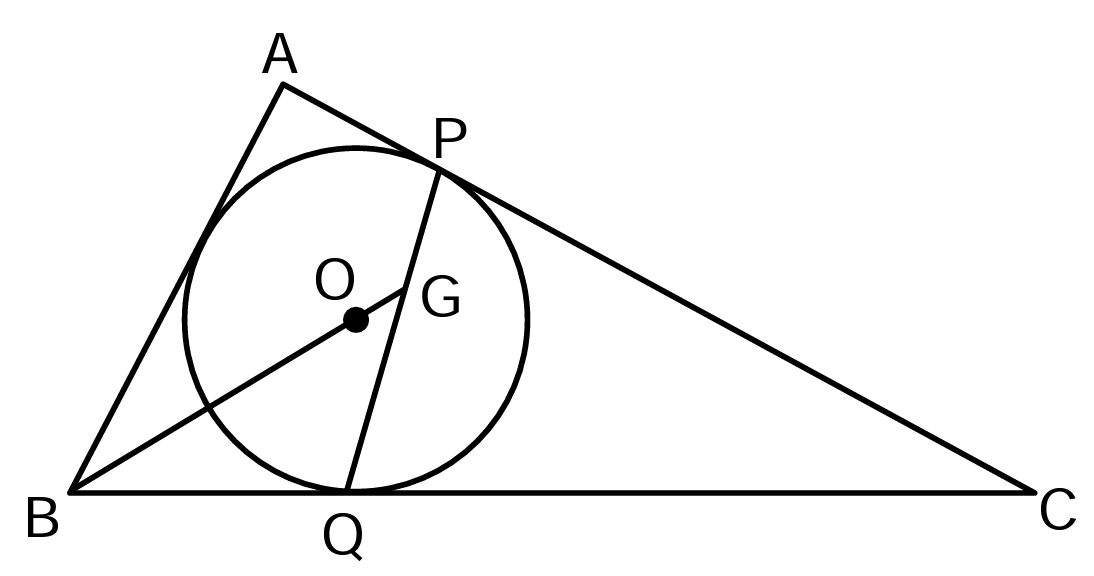A baffling geometry question

In the given figure, P and Q are point of contact. O is the incentre. Line BO produced, meets PQ at G. Find the value of angle AGB?
The reason i shared the question as a note is that i don't know the answer. Try it out, & if you solve, please post a rigorous solution rather than mere guess.
No vote yet
1 vote
Easy Math Editor
This discussion board is a place to discuss our Daily Challenges and the math and science related to those challenges. Explanations are more than just a solution — they should explain the steps and thinking strategies that you used to obtain the solution. Comments should further the discussion of math and science.
When posting on Brilliant:
*italics*or_italics_**bold**or__bold__paragraph 1
paragraph 2
[example link](https://brilliant.org)> This is a quote# I indented these lines # 4 spaces, and now they show # up as a code block. print "hello world"\(...\)or\[...\]to ensure proper formatting.2 \times 32^{34}a_{i-1}\frac{2}{3}\sqrt{2}\sum_{i=1}^3\sin \theta\boxed{123}Comments
Check out this graphic
With lots of angle-chasing, it can be worked out that, given angles a,b, the following angles are
∠OAP=90−a−b
∠OGP=90+a+b
∠AOG=90−a
∠APG=90+a
Hence, APGO is a cyclic quadrilateral. Moreover, since APO is a right triangle, AO is the diameter of the circle that circumscribes the cyclic quadrilateral APGO. Hence, AGO is also a right triangle, and we have our answer.
Here is another way to prove it. It is easy to see ∠PQC=∠BAC/2+∠ABC/2. So you can get ∠BGQ=∠BAC/2=∠BAO, therefore △BGQ∼△BAO and BG×BO=BQ×BA. Let the point of contact of incircle with AB is D, we have BG×BO=BD×BA. So AGOD is cyclic. ∠AGB=∠BDO=90∘
Log in to reply
You haven't defined the point D in this proof. But it is simply the point touching the circle on the segment AB.
AP PG GB
Construct a model diagram with AC and BC AB as tangents
Log in to reply
With any dimensions of radius and lengths of triangle
I took an equilateral triangle and using coordinate geometry found out the value of the angle. Is the method legitimate?
Log in to reply
You've only found it when the triangle is equilateral. You haven't proved that the angle is the same for all triangles. You can't assume that all the triangles have the same angle just because the question asks for a single unique numeric value.
90